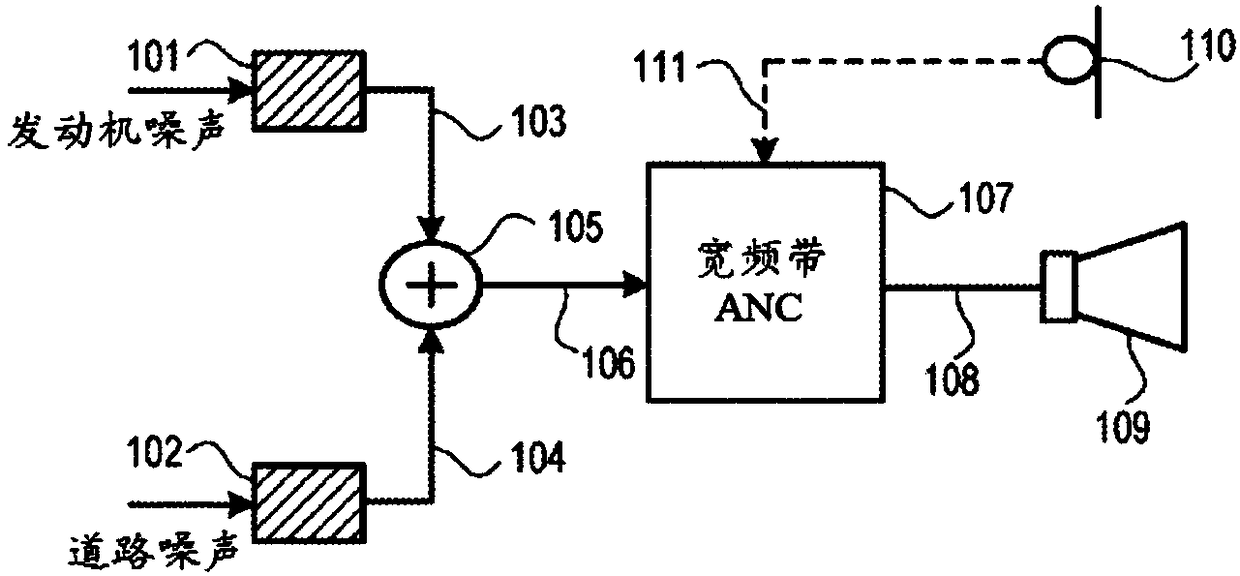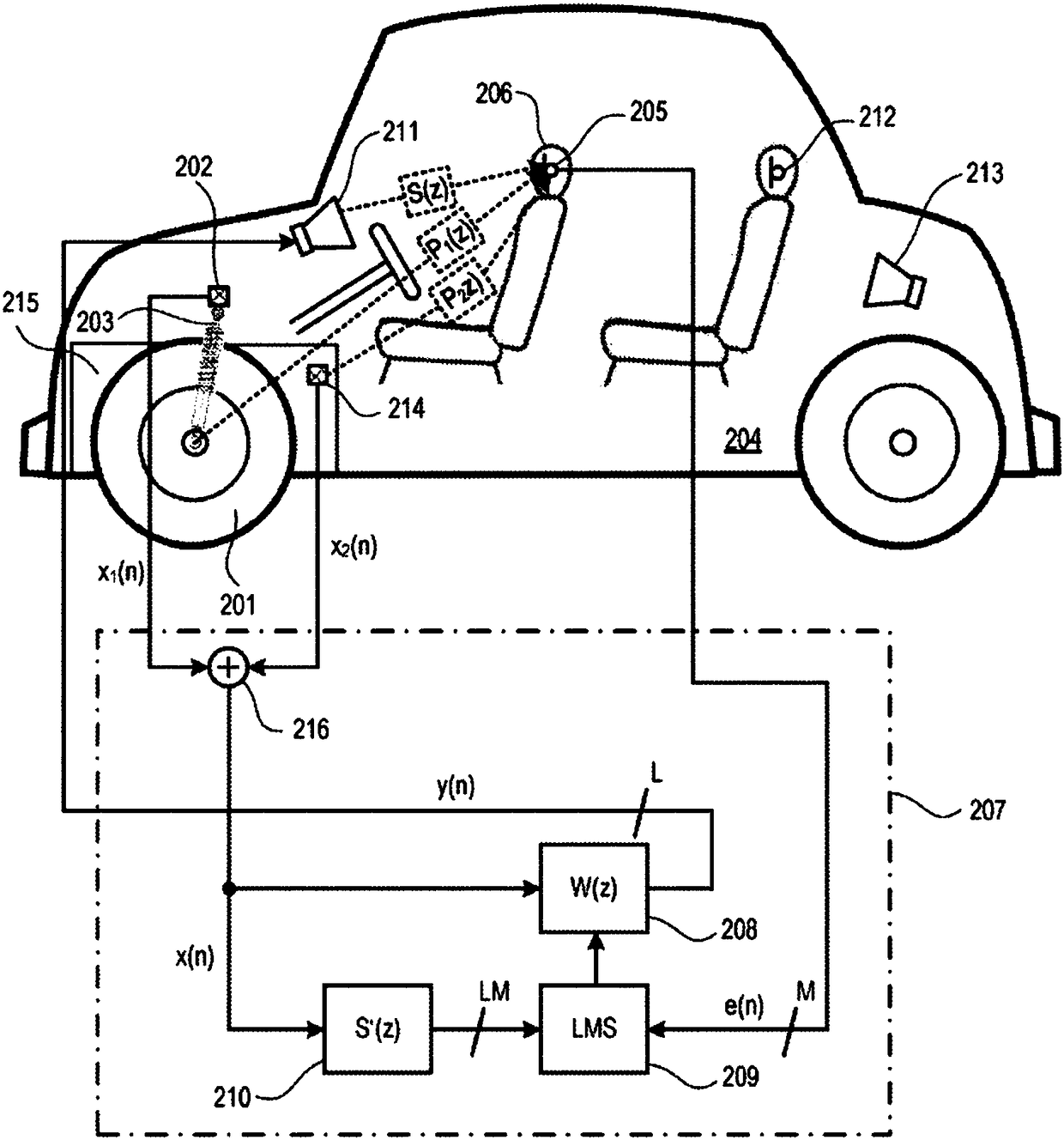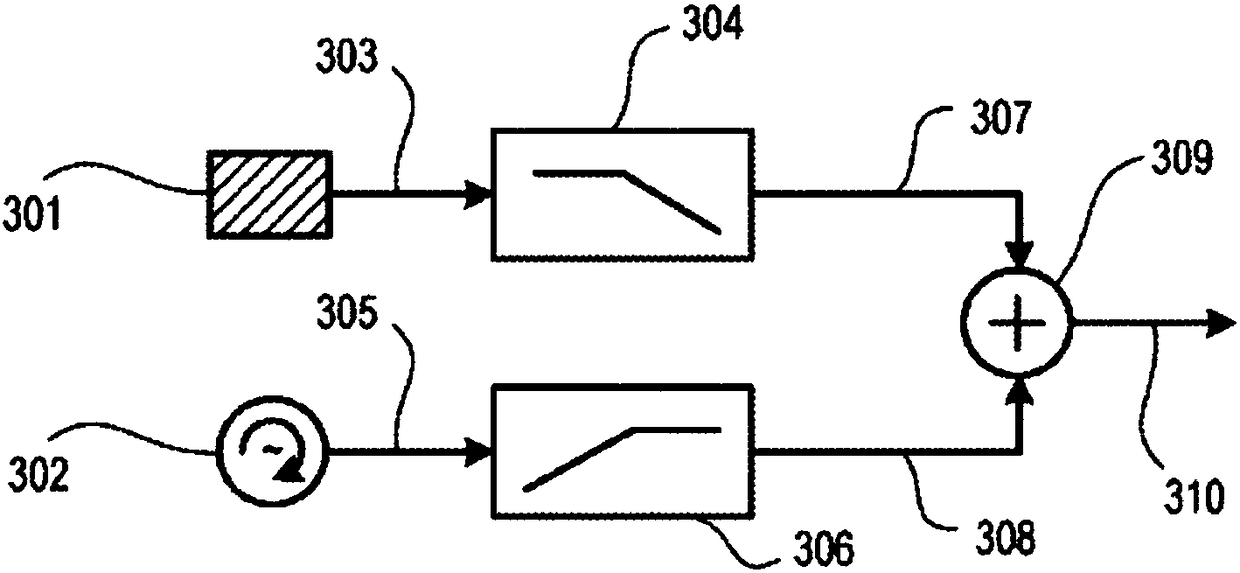Road and engine noise control
A noise control and engine technology, applied in active noise control, sounding equipment, musical instruments, etc.
- Summary
- Abstract
- Description
- Claims
- Application Information
AI Technical Summary
Problems solved by technology
Method used
Image
Examples
Embodiment Construction
[0014] Noise is generally a term used to designate sounds that do not contribute to the informative content of the receiver but are considered to interfere with the audio quality of the desired signal. The evolution of noise is usually divided into three stages. These stages are noise generation, propagation (emission), and perception. It can be seen that attempts to successfully reduce noise initially target the noise source itself, eg by attenuating the noise signal and subsequently by suppressing the propagation of the noise signal. In many cases, however, the emission of noise signals cannot be reduced to a desired level. In this case, the concept of removing undesired sounds by superimposing compensation signals is applied.
[0015] Known methods and systems for canceling or reducing emitted noise suppress unwanted noise by generating canceling sound waves to be superimposed on the undesired signal, the amplitude and frequency values of the canceling sound waves being...
PUM
 Login to View More
Login to View More Abstract
Description
Claims
Application Information
 Login to View More
Login to View More - R&D
- Intellectual Property
- Life Sciences
- Materials
- Tech Scout
- Unparalleled Data Quality
- Higher Quality Content
- 60% Fewer Hallucinations
Browse by: Latest US Patents, China's latest patents, Technical Efficacy Thesaurus, Application Domain, Technology Topic, Popular Technical Reports.
© 2025 PatSnap. All rights reserved.Legal|Privacy policy|Modern Slavery Act Transparency Statement|Sitemap|About US| Contact US: help@patsnap.com



